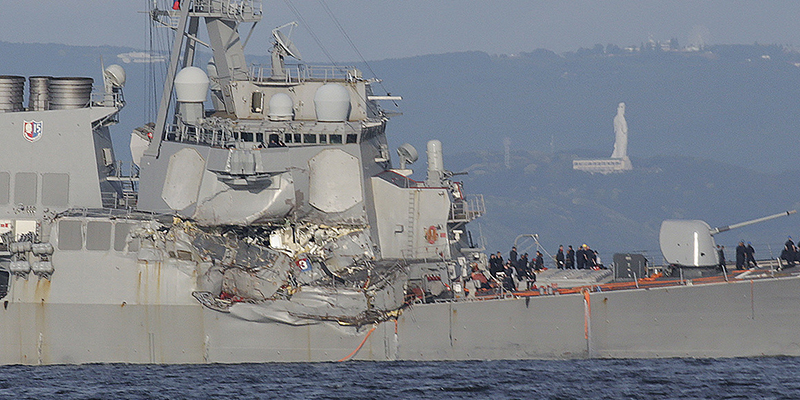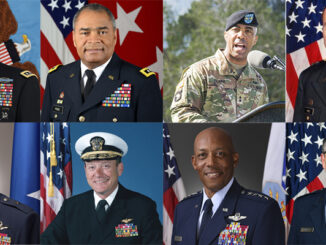
There is a widespread belief that women judge each other more harshly than men judge women, women judge men or men judge other men in a workplace environment. A conflict between two women is sometimes labeled a “cat-fight,” a term of disparagement that does not exist for men.
Another term applied to women is the “Queen Bee Syndrome,” that’s used to describe a female boss who has typically “male traits” — ambition, thinking of results not people, dominance, and feeling threatened by successful subordinates, particularly if they are women. Labeling such behavior a “syndrome” defines it as a sort of mental or behavioral illness. The truth is, these traits are characteristic of powerful leaders, regardless of gender.
There are, of course, arguably tangible differences in how females and males deal with workplace conflict. Men often view conflict as a fight over territory, as a chance to position themselves, push forward their ideas and as an opportunity to brand themselves to their boss. For males, conflict may be a tactic, a way to test an opponent’s resolve.
Women, on the other hand, often desire to mediate conflict, seeing it as hurtful to team members. For this reason they may feel the need to think of other’s feelings first, consciously or subconsciously allowing their own wants and desires to take a backseat, or to be completely suppressed.
WHY WOMEN NEED TO BE THERE
Because of stupid stereotyping, women have been prevented from many professions for far too long. Kristine Mautner, for example, was the first female police officer of the small town of Boulder City, Nevada, located just on the other side of Hoover Dam. Many were hoping she would fail. Even though she was seldom given an even break, she eventually rose up through the ranks and became a police detective recognized by the FBI as being one of the top ten police officers in the United States.
Her case solving rate was 75%, while the average case solving rate for detectives all over America was only 35%. Male police officers discovered much to their delight, that having a female cop on the force was a big plus and not a detriment as they first thought. Mautner eventually retired from the Boulder City Police Department to open her own private-investigations company called Foxhound Investigations, LLC in Las Vegas, Nevada.
As another example of women power, most escrow companies only hire women to be escrow officers. They have discovered through trial and error that women excel at multi-tasking much more than their male counterparts. Women bring to the table a different skill-set that can be most beneficial as a leader for companies and within our military. Men should never underestimate the power of women’s intuition. Sometimes they can see things the men simply cannot see.
The concern is the interpersonal relationships between women in the workplace. Women sometimes become deeply hurt and offended over something a man would just laugh at and forget. Example…
A WOMAN: “That bitch called me a dishwater blonde. I hate her. I’ll get even with her if it’s the last thing I do.”
A MAN: “He said my hair looks like horseshit. Only someone who is full of shit would know. Oh well, what’s for lunch?”
According to retired Army Colonel Jo Rusin, both males and females have similar quarrels and spats. The difference is that with males it usually comes out in the form of loud, verbal exchanges, where females are more likely to use the silence mode. Surely the chain of command aboard the USS Fitzgerald knew this business was going on. The collision of these two ships was a leadership issue aboard the Fitzgerald.
Whether they were males or females, the commander should have called them in for a straight-up, no BS corrective counseling session and told them to knock the behavior off. Was the commander reluctant because they were females, or was he just generally reluctant to confront trouble? Col. Rusin is a military leadership author who addresses gender issues at JoRusin.com. We strongly recommend her website and books for anyone aspiring to a higher leadership position either in the military or the civilian sector.
THE OTHER MCCAIN
Did a trivial dispute between women on the USS Fitzgerald end up causing the death of seven sailors and millions in damage to a naval vessel? One of the websites we love to read from time to time is: TheOtherMcCain.com. They recently received this anonymous email about what may have really happened aboard the USS Fitzgerald…

During the early weeks after the USS Fitzgerald was speared by a lumbering Philippine container ship, it was noteworthy that the captain and a couple of admirals were publically named, but not the actual officer in charge, the officer of the deck. (OOD) The other person who should have kept the Fitz out of trouble is the person in charge of the combat information center, the Tactical Action Officer. That individual is supposed to be monitoring the combat radar, which can detect a swimmer at a distance of two miles.
Not until a year later, when the final reports are made public and the guilty parties have been court-martialed, does the truth come out. The OOD was named Sarah, and the Tactical Action Officer was named Natalie, and they weren’t speaking to each other!!! The Tactical Action Officer would normally be in near constant communication with the OOD, but there is no record of any communication between them that entire shift!
Another fun fact: In the Navy that won WWII, the damage control officers were usually some of the biggest and strongest men aboard, able to close hatches, shore up damaged areas with timbers, etc. The Fitz’s damage control officer was also a woman, and she never left the bridge. She handled the aftermath of the accident remotely, without lifting a finger herself!
Look it up: The OOD was Sarah Coppock, Tactical Action Officer was Natalie Combs. . . . When I noticed last year that they were doing all they could to keep the OOD’s name out of the headlines, I speculated to my son that it was a she. Turns out all the key people (except one officer in the CIC) were female!
Indeed, I did some searching, and Lt. Coppock pleaded guilty to dereliction of duty. Lt. Combs faced a hearing last month:
In an 11-hour hearing, prosecutors painted a picture of Lt. Irian Woodley, the ship’s surface warfare coordinator, and Lt. Natalie Combs, the tactical action officer, as failing at their jobs, not using the tools at their disposal properly and not communicating adequately. They became complacent with faulty equipment and did not seek to get it fixed, and they failed to communicate with the bridge, the prosecution argued. Had they done those things, the government contended, they would have been able to avert the collision.
That two of the officers — Coppock and Combs — involved in this fatal incident were female suggests that discipline and training standards have been lowered for the sake of “gender integration,” which was a major policy push at the Pentagon during the Obama administration. It could be that senior officers, knowing their promotions may hinge on enthusiastic support for “gender integration,” are reluctant to enforce standards for the women under their command.
This was the story of Kara Hultgreen, the Navy pilot who died in a 1994 F-14 crash. Investigation showed that Hultgreen had been allowed to proceed in her training after errors that would have meant a washout for any male pilot. But the Clinton administration was pushing for female fighter pilots, which resulted in a competition between the Navy and Air Force to put women into these combat roles.
It is not necessary to believe that…
(a) women shouldn’t be fighter pilots, in order to believe
(b) lowering standards for the sake of quotas is a bad idea.
Of course, you may believe both (a) and (b), but it is (b) that gets people killed.
It seems obvious that the Pentagon (and the liberal media) sought to suppress full knowledge of what happened to the Fitzgerald in the immediate aftermath of the June 2017 incident that killed seven sailors, in the same way the details of Kara Hultgreen’s death were suppressed.
It took investigative reporters like Rowan Scarborough of the Washington Times a lot of hard work to find out what actually happened to Hultgreen. Let’s hope other reporters will dig into what’s happening in our military with the “gender integration” agenda at the Pentagon now.

We share this anonymous email (courtesy of: TheOtherMcCain.com) with our readers because it’s food for thought. If this anonymous email is factual, perhaps the truth is revealing a tinge of military corruption. Were the deaths of our sailors on the Fitz and the extreme damage to the Fitz caused because female officers were not communicating? Were one or more having a hissy-fit over something trivial?
Were the female officers on the Fitz not communicating because this is part of their female DNA? Just by making such a statement, do we reveal a male bias, or is there truth in there somewhere? Maybe we need to have a discussion on the topic of female interpersonal relationships vs. male interpersonal relationships and how those relationships may or may not be affecting the professionalism of our officer corps in all branches of the service.
We should also have a discussion about the way the Pentagon was concealing what really happened aboard the Fitzgerald. Maybe their is a desire to be more politically correct, rather than be the most effective fighting force in the world. Is the military still giving women a pass in training schools that would washout a male contender?
Folks, this is serious stuff the American people need to discuss. Lives have been lost, and many more lives may be at risk.



